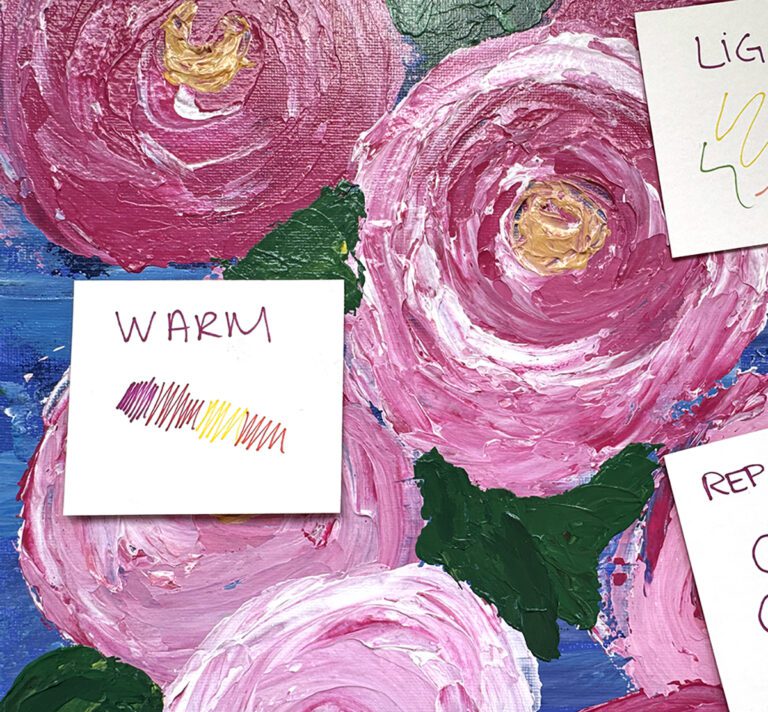Assessing creative work can be extremely difficult. While math and science will often have one correct outcome, art is open-ended and more subjective. There are innumerable pathways to success and every student will produce unique work. That is why art teachers love a good rubric! Rubrics can streamline assessments, provide clear expectations, and help students understand areas for improvement. But did you know that rubrics can be more than a grading tool?
Leverage rubrics in 11 unexpected ways to enhance student learning, foster meaningful dialogue, and refine your teaching practice.

There are many ways to use rubrics but where do you start if you don’t know how to write a solid rubric? The first resource you won’t want to miss is the Plug n’ Play Rubric from FLEX Curriculum. This rubric is customizable to any art project and will create consistency in your curriculum. Save more time with the many other rubrics and assessments in FLEX—simply select the Assessment tab and filter by grade level and medium to find what you need.
1. Guide parent-teacher conferences.
A rubric provides a clear framework for discussing student progress with parents. It moves conversations beyond letter grades and highlights specific areas of strength and growth tied to learning objectives. This shared understanding helps you collaborate effectively with parents to support students’ artistic development.
2. Support reflection, self-assessment, and artist statements.
Rubrics provide a structured format for students to reflect on their creative process and articulate their artistic goals. Turn the rubric criteria into prompts to kickstart reflection. This will result in more thoughtful self-assessments and more insightful artist statements.

3. Focus critiques.
Similarly, structure critiques around the rubric to provide students with focused feedback. Tying feedback to the rubric criteria helps students provide constructive comments based on the artwork. It pulls the attention off the artist and onto the work. This approach also encourages students to more deeply analyze artwork and develop their critical thinking skills in a supportive environment.
4. Check in with students.
Integrate rubrics into student check-ins to foster a sense of ownership and encourage self-reflection. Students can use the rubric to monitor their own progress and identify areas where they excel or need additional support. This process promotes self-awareness and empowers students to take an active role in their learning. Using rubrics in this way also guides the feedback conversation in a way that feels predictable and comfortable for students.
5. Plan future projects.
Analyze rubric data to identify trends in student performance and areas where students consistently succeed or struggle. This information informs future lesson planning and helps you tailor instruction to meet the specific needs of your students. By using rubrics to identify knowledge gaps, you can differentiate instruction more effectively.
6. Build research skills.
Provide students with rubrics designed to evaluate the credibility and relevance of research sources. Students will gain critical research skills as they identify reliable websites, videos, and other resources. It will help them to assess the accuracy, authority, and objectivity of information, which is crucial in an age of digital media.

7. Decrease student questions.
We’ve all heard the question a thousand times—”Am I done yet?” Create a rubric for students to reference to determine if their work is complete. List hallmarks of completion, such as filling in negative space and putting their name on the work. Laminate the rubric and hang it where students put their completed work. This way, they can check it before turning their project in.
8. Monitor studio habits.
Establish clear expectations for studio habits and encourage responsible behavior with a studio rubric. Be sure to outline specific criteria for maintaining a clean and organized workspace. This promotes a productive learning environment and instills ownership in the art room. It develops organizational skills, attention to detail, time management strategies, and respect for shared resources.

9. Evaluate your lessons.
A rubric can also assist you with assessing your teaching strategies and identifying areas for improvement. This reflective practice encourages continuous growth and helps you refine your instructional approach to better meet the needs of your students. The specificity of a rubric will clearly tell you if it’s the clarity of learning objectives, the engagement of activities, or the overall impact of your lessons. You can even give your students a rubric for scoring your lessons to tell you which are the most interesting and impactful!
10. Encourage engagement.
Rubrics can assess how students work and conduct themselves in the classroom. Think about the skills you want students to demonstrate, such as listening quietly when others speak, asking good questions, sharing relevant connections, revising work, and seeking feedback for improvement. Make a rubric with examples to define these soft skills.
11. Prompt deeper discussions.
Rubrics equip students with a shared vocabulary and a common framework for discussing art. This shared understanding facilitates more meaningful conversations about artistic choices, techniques, and the creative process. Using a rubric, students can engage in more focused and productive critiques of their work and the work of others.

Ultimately, rubrics empower both teachers and students beyond grading art projects. Clear and specific rubrics foster transparency, encourage self-reflection, maintain an orderly classroom, and promote meaningful dialogue about art. By embracing these unexpected rubric applications, you can cultivate a more engaging and enriching learning environment. Watch teaching and learning flourish and students develop a deeper understanding of their artistic potential!
How else do you use rubrics in your classroom?
What other tools are helpful for student feedback?
To continue the conversation, join us in The Art of Ed Community!
Magazine articles and podcasts are opinions of professional education contributors and do not necessarily represent the position of the Art of Education University (AOEU) or its academic offerings. Contributors use terms in the way they are most often talked about in the scope of their educational experiences.





